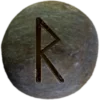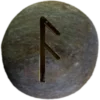Last Updated on May 7, 2025


Description and History
Erik the Red, also spelled Eiríkr rauði (pronounced AY-ree-kr ROW-thee), stands as a bold figure in Viking history. His full name is Erik Thorvaldsson, meaning “Erik, son of Thorvald.” He earns the nickname “the Red” because of his fiery red hair and beard. Erik is best known for founding the first Norse settlement in Greenland. His story combines exploration, exile, and endurance.
Born in Norway around 950 CE, Erik moves to Iceland with his family as a child. His father, Thorvald Ásvaldsson, faces exile for manslaughter. This punishment reflects a common legal practice among Norse communities. Once in Iceland, the family settles in the western region. Erik grows up in a rough frontier society shaped by farming, feuding, and honor.
As an adult, Erik marries Þjódhildr (pronounced THYOTH-hild-r). They have several children, including Leif Erikson. Erik inherits his father’s temper and finds himself in frequent disputes. After killing several men during a feud, Iceland’s courts exile him for three years.
Rather than wait passively, Erik sails west in search of new lands. He follows tales of a large landmass seen by earlier sailors, including Gunnbjörn Ulfsson. Erik reaches the island and spends three years exploring its coasts. He names it Greenland—Grœnland in Old Norse (pronounced GROON-lahnd). The name serves a purpose: Erik wants to attract settlers. He believes a pleasant-sounding name will make people more eager to join him.
Settlement in Greenland
After his exile ends, Erik returns to Iceland and persuades others to sail with him. Around 985 CE, he leads 25 ships loaded with people, livestock, and supplies. Only 14 ships complete the journey. The rest sink or turn back. Erik establishes his main settlement at Brattahlíð (pronounced BRAH-tah-hleeth) in southern Greenland. His farm becomes a center of Norse life on the island. The area features fertile valleys, suitable for grazing sheep and cattle.
Erik governs the settlement like a chieftain. He holds influence but not unchecked power. Norse law still applies. Disputes go before an assembly called the Thing. Although remote, the Greenland colonies maintain trade ties with Iceland and Norway. They export walrus ivory, sealskins, and furs.
The harsh climate poses challenges. Short growing seasons, isolation, and sea ice demand resilience. Despite this, the colony survives for centuries. Erik’s leadership in its early years shapes its structure and traditions.
Erik never converts to Christianity. His wife Þjódhildr adopts the new faith after missionaries visit Greenland. She builds a church near their home, but Erik refuses to enter it. This religious split reflects broader changes across Norse societies at the time.
Legacy and Saga Mentions
Erik appears in The Saga of Erik the Red (Eiríks saga rauða, pronounced AY-reeks SAH-gah ROW-thah). This text tells of his voyage, settlement, and family. The saga blends history with legend, as is common in Icelandic literature. It also highlights his son Leif’s voyage to Vinland (likely part of North America). ![]()
Erik does not join his son’s expedition. Some versions say he plans to go but falls from his horse and sees it as a bad omen. Others suggest his advancing age prevents the journey.
Erik’s legacy survives in the landscape he helped colonize. Greenland’s Norse ruins, including those at Brattahlíð, reflect his efforts. While the colonies eventually vanish due to climate change and isolation, Erik’s role as a pioneer remains central.
The name “Erik the Red” endures in history, sagas, and scholarly texts. Whether called Eiríkr rauði, Erik Thorvaldsson, or simply Erik, he stands as a symbol of Viking ambition and courage.
Runes Associated with Erik the Red
The Raido rune connects strongly to Erik the Red’s journeys. Raido, symbolizing travel and journeys, resonates with Erik’s exploration and adventurous spirit. This rune represents movement, guiding travelers toward new and unknown destinations, much like Erik’s ventures to Greenland. The Tiwaz Elder Futhark rune, symbolizing courage and victory, also reflects Erik’s bravery. His drive to conquer challenges and claim new lands aligns with Tiwaz’s associations with resilience and honor. ![]()
The Importance of Erik the Red in Asatru
In Asatru, Erik the Red embodies qualities like bravery, resilience, and leadership. His journeys remind Asatru followers of the value of exploration and forging new paths. Erik’s actions in settling Greenland serve as an inspiring story of courage and the strength to overcome challenges. His legacy motivates followers of Asatru to embrace their own inner warrior, face hardships, and seek meaningful adventures. Through his spirit, Erik the Red remains a model of Norse virtues in Asatru practices.

